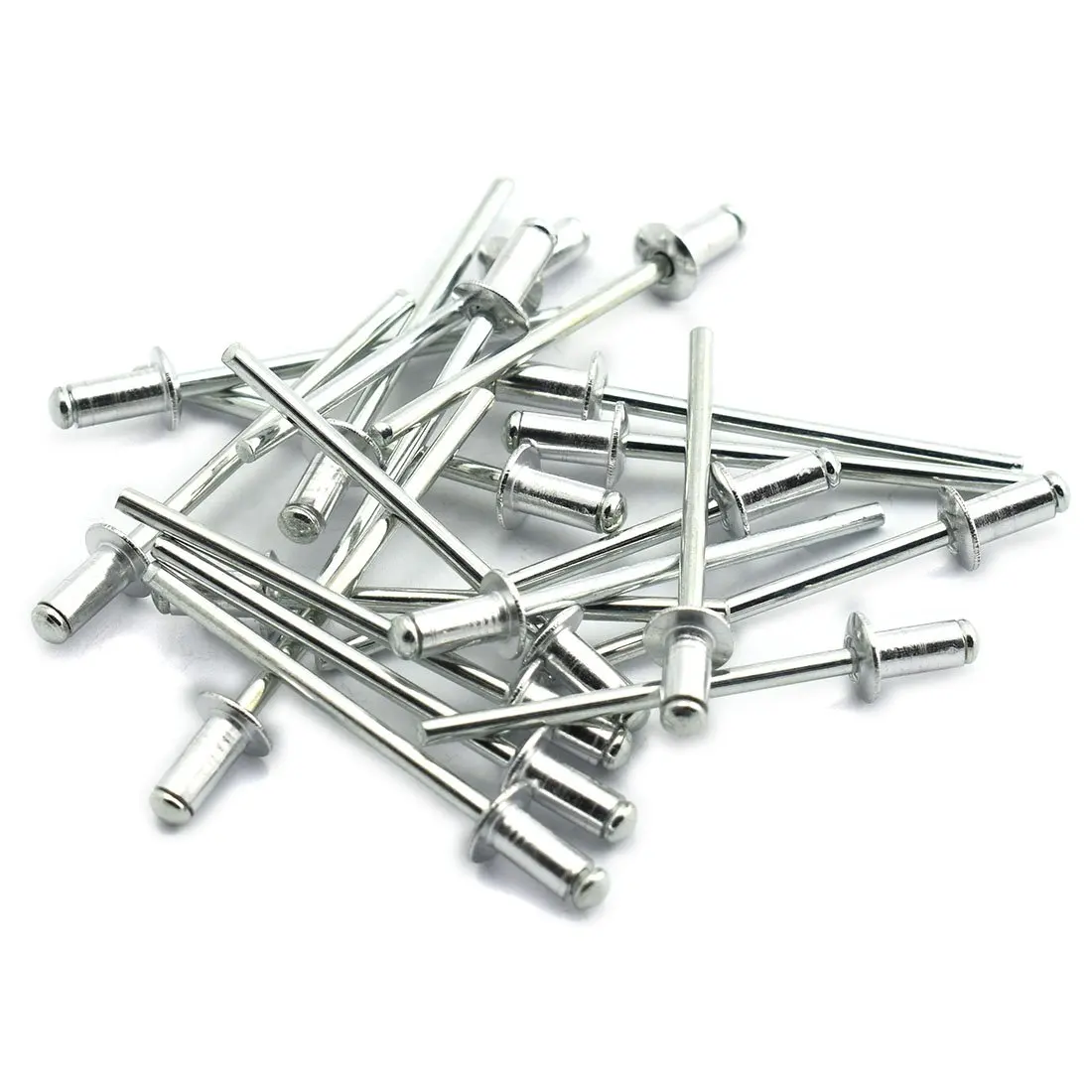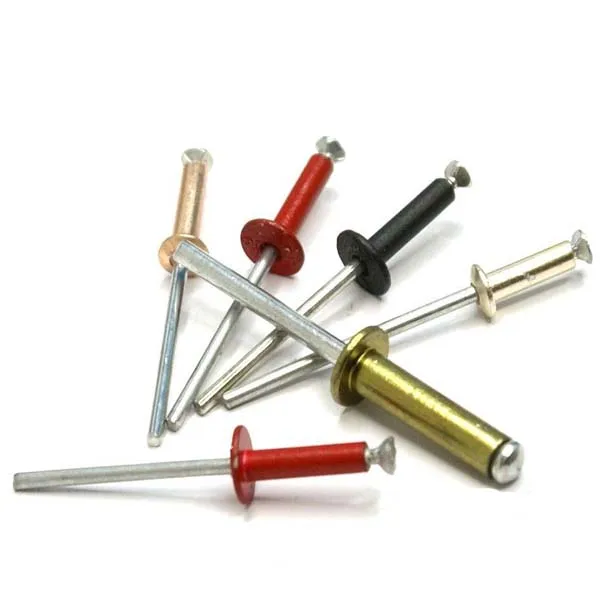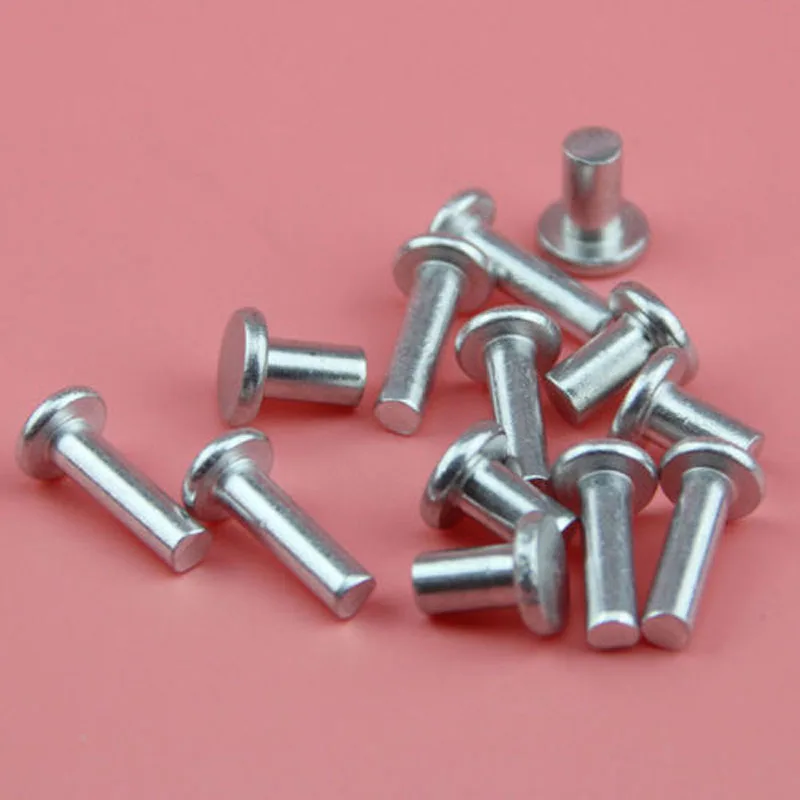

- Rivet sizes how to#
- Rivet sizes full#
- Rivet sizes code#
The end opposite to the head is called the tail. Before being installed, a rivet consists of a smooth cylindrical shaft with a head on one end. Brown (December 2014).Ī rivet is a permanent mechanical fastener. In most applications, AN470 rivet supersedes AN430 rivet, AN442 rivet, AN-455 rivet & AN456 rivet.Riveters work on the Liberty ship SS John W. The final number indicates the rivet length The diameter of a rivet is indicated in 32nds of an inch.=1100(2S) Aluminum, AD=2117-Aluminum Alloy, F=Corrosion Resistant Steel, etc.Ĥ.
Rivet sizes code#
After the style code is a letter code identifying the material or alloy type: 470=universal head, 430= round head, etc.ģ.

Next, there are three numbers specifying the rivet head style: MS - When these two letters precede numbers, they indicate Military Standard Specifications.Ģ.AN - When these two letters precede numbers, they indicate Army and Navy Specifications.The first set of letters and numbers refers to the industry specification (military standard):
Rivet sizes how to#
Here is a quick overview of how to identify the different parts of a rivet numbering system:ġ. See the information below for an overview of the codes used for our products and in our Rivet Identification Chart. Various codes are used to specify rivet material type, head type, diameter, length and industry specifications.
Raised circle (alloy code E): 7050 aluminum alloy. Raised cross (alloy code B): 5056 aluminum alloy. Raised double dash (alloy code DD): 2024 aluminum alloy. Raised dot (allow code D): 2017 aluminum alloy. Dimple (alloy code AD): 2117 aluminum alloy. No mark (alloy code A): 1100 or 3003 pure aluminum. 
This is important because rivet materials are chosen based on unique properties such as corrosion resistance of yield strength that are required by the intended application. Since solid rivets are produced in a range of materials that, special markings are placed on the head of a rivet to help identify the type of alloy used.
Rivet sizes full#
Modified Brazier Head Rivets: button head rivets that feature a lower profile head design than full brazier head rivets. Brazier Head Rivets: button head rivets that feature a wide, shallow head that provides a larger bearing surface under the head for greater resistance to pull through. Flat Head Rivets: have a head that lays flat on the part or material surface. They are “universal” because they can be used in place of any rivet head style (round, flat, brazier, etc.). Universal Head Rivets: also known as button head rivets, this style has a rounded head with a lower profile than standard round head rivets. The head of the rivet in included in the length measurement. 90 ° Countersunk Rivets: features an aerodynamic 90 ° head that sits flush with a part or material surface for aesthetics or to prevent the rivet from catching on moving or rotating parts. The length measurement for this rivet style includes the head and tail or shaft. This aerodynamic rivet style sits flush with a material or part surface once installed and are frequently used for applications involving moving or rotating parts. 100 ° Countersunk Rivets: countersunk rivet with 100 ° head. This head style sits higher on the surface than other rivet styles. Round Head Rivets: are the most commonly used type of rivet and feature a dome shaped head and a flat bearing surface. Head type is especially important for applications where drag and wind resistance are determining factors, or when the rivets are being installed on moving parts. Some rivet heads project out from the surface of a part after installation, where others lay flat or flush with a surface. Head style is an important consideration when choosing a rivet. For more information, use the chart below, or call us today. We carry a commercial equivalent line of Military Standard rivets and Army Navy Specifications rivets for all standard rivet head styles and markings.







 0 kommentar(er)
0 kommentar(er)
